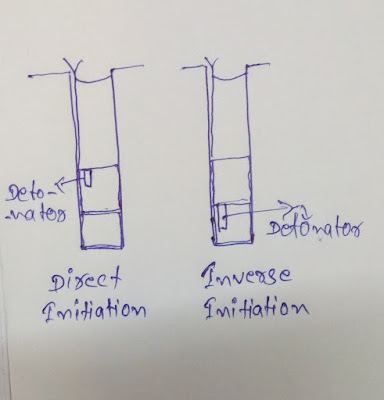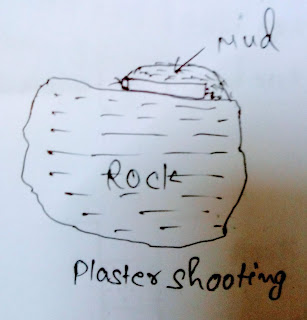Opencast Mining
 Opencast Mining is a Mining which open to sky. This mining is also called open-pit, quarry, strip mining. This mining is much easier than Underground mining. It is involves in removing of the upper layer of alluvium or rocks or both to reach the Mineral bed. In this method the minerals are completely removed.
Opencast Mining is a Mining which open to sky. This mining is also called open-pit, quarry, strip mining. This mining is much easier than Underground mining. It is involves in removing of the upper layer of alluvium or rocks or both to reach the Mineral bed. In this method the minerals are completely removed.Further it is done in the following types...
1.Manual Quarrying :-
The manual labour are employed who drills holes form 1.2m to 1.8m and 37mm of diameter by handheld drillers. The low explosive like gun-powder are used. The loading is to do by manual loader into tubs. The rope haulage or locomotives are used for transportation.
2. Mechanised Opencast :- In this method the holes are of 6m to 18m deep and diameter of 125mm to 250mm. Higher explosives (Liquid oxygen, opencast gelatin etc.) are used. The transportation is by the mean of locomotives, belt conveyor or dumpers are used.
In mechanised Opencast mining huge machine are use. They are dragline, bucket wheel excavator, shovels, haulpak, well-hole drill etc...
• The major supply of mineral in the world is by opencast Mining.
*Stripping Ratio :- It is the ratio of thickness of over burden and thickness of mineral deposit or quarriable limit.
Advantages:-
•In opencast Mining there is no problem of roof control, maintenance of roadway, support of roof. Complete extraction of mineral is possible, as no mineral left in pillar roof or at other place.
•In this method there is no unproductive working is involves.
•This mining is open to sky due to this supervision is easy.
•Danger and hazard is less as compared to underground mining.
•Female labour can be employed.
•High output per man shift is possible.
•Large scale of mechanisation is possible as there is less risk.
•The supply of mineral is high which can be easily varied to meet wagon or locomotives supply.
Disadvantages:-
•This mining involves many disadvantages...
•The working of mining affected by weather.
•The agricultural land or forest is destroyed.
•It is uneconomical for larger depth.
•Dumping of overburden is also a big issue because it cover a large area and also in when wind blows, the problem of dust is also a issue.
•It is also involves in removing of building, diverts electric wires water main, telephone lines etc.
•In this mining heavy explosives are used. So the residential area should be 300m far from the quarry because due to heavy blasting cause damage to the important building which results for compensation.
*The seam which are at the shallow depth with actively Gassy, liable Spontaneous or bad roof support, preferable for quarry.
Bench in Opencast
The extraction of mineral and overburden is by the formation of bench by keeping the slope maximum up to 45° from horizontal.
Bench is made up of two elements floor and face and the width of floor shouldn't be less then height of face.
Height of bench depends on mineral, for loose material it should be 1.5m, for coal it should not exceed 3m. For sand stone and hard rock, bench height is different for different shovels and also depends that it is manual quarry or mechanised quarry (as shovels are used).
•For manual quarry bed height should be 3m to 4.5m.
•For mechanised quarry it is more than 5.5m.
- For 2 cubic meter shovel suitable height is 6 to 8m.
- For 3.5 cubic meter shovel height of bench should be able 12m(approx).



